Colosseum Useful Information

How to visit the Colosseum in Rome quickly and easily
You can easily visit the Colosseum in Rome by booking a guided tour which also includes the Roman Forum and the Palatine Hill. BOOK YOUR COLOSSEUM TOUR NOW!
Colosseum in Rome - HISTORY
The Colosseum in Rome, also known as the Flavian Amphitheatre, is one of the most iconic symbols of ancient Rome and an architectural marvel. Constructed between AD 70 and 80 under the emperors Vespasian and Titus, the Colosseum was originally known as the Amphitheatrum Flavium, named after the Flavian dynasty of emperors. The massive structure was designed to host gladiatorial contests, animal hunts, executions, and other public spectacles, providing entertainment for up to 50,000 spectators.
Architecturally, the Colosseum is a masterpiece of Roman engineering and design. It stands approximately 48 meters (157 feet) high and measures 189 meters (620 feet) long and 156 meters (512 feet) wide. The elliptical arena is surrounded by tiered seating, which was divided into different sections to accommodate various social classes. The structure is made of concrete and stone, showcasing the advanced building techniques of the Romans. The outer wall is composed of three levels of arches, each adorned with half-columns in the Doric, Ionic, and Corinthian orders.
The Colosseum also featured a complex system of vaults and arches, which provided strength and support while allowing for large, open spaces. The arena floor, now mostly gone, covered a network of underground passages called the hypogeum. These subterranean chambers housed gladiators, animals, and equipment, and were connected by a series of elevators and trapdoors, adding to the dramatic spectacle of the games.
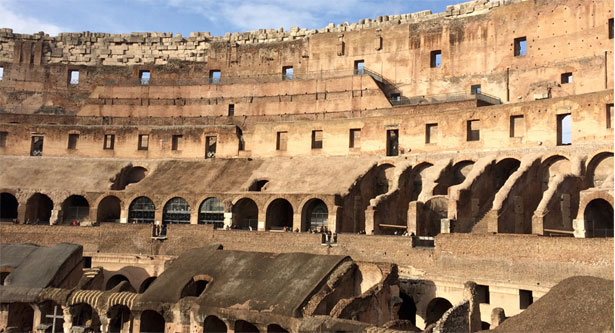
Despite suffering damage from earthquakes, stone robbers, and natural wear over the centuries, the Colosseum remains a testament to the grandeur of ancient Rome. Today, it is one of Italy's most popular tourist attractions and a UNESCO World Heritage site, drawing millions of visitors each year. The Colosseum not only represents the architectural ingenuity of the Romans but also serves as a powerful reminder of the complex history of public entertainment and social dynamics in ancient Rome.
Colosseum guided tours

Colosseum tour with private guide
Discover the wonders of ancient Rome with an official and expert-guided tour of the Colosseum. Dive deep into history as you explore this iconic monument, from the awe-inspiring arena to the fascinating hypogeum below. Our knowledgeable guides bring the past to life, sharing captivating stories and insights about gladiatorial games, Roman engineering, and daily life in ancient times. Skip the lines and enjoy a comprehensive, enriching experience tailored for history enthusiasts and curious travelers alike. Book your tour today for an unforgettable journey through one of the world's most remarkable historical sites. Reserve now and step back in time! BOOK YOUR PRIVATE TOUR TO THE COLOSSEUM
The Colosseum and its Underground
The underground area of the Colosseum, known as the hypogeum, is a fascinating part of this ancient structure. Consisting of a network of tunnels and chambers, the hypogeum was where gladiators, animals, and equipment were kept before the spectacles began. This subterranean complex included holding cells, storage rooms, and intricate machinery such as elevators and trapdoors used to lift animals and fighters onto the arena floor. The hypogeum added a dramatic element to the games, enhancing the surprise and excitement for the spectators. Today, it offers a glimpse into the logistical complexities and engineering prowess of ancient Roman entertainment.
Colosseum with Belvedere - Not available now

The other guided tour of the Colosseum is the Colosseum with Belvedere. This also includes the line-skipping entrance to the Colosseum, the introduction to the monument and its history and then access to the third, fourth, and fifth tiers, known as the "rings"! From the fifth "ring," you can enjoy an incredible, breathtaking view of the entire Colosseum and all of Rome. Those who love photography and special views will not want to miss it!
Vatican Museums Tickets
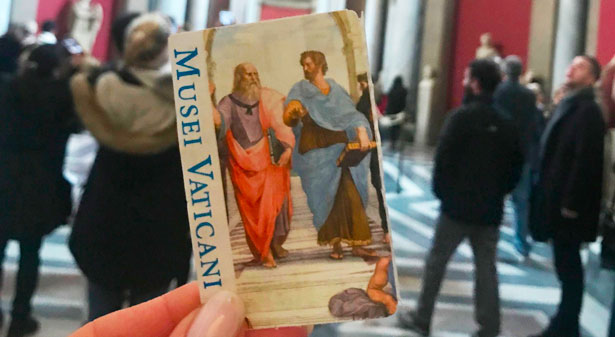
Vatican Museums tickets, why you should book them?
Vatican Museums tickets — Do you really need to book them in advance? The Vatican Museums are definitely among the most visited museums in the world. More than six million tourists flock to the Vatican's beautiful museums every year. Especially from March to late October, the Vatican Museums are always really crowded, as visitors from every corner of the world flock here.
We highly recommend booking Vatican Museums entrance tickets for visitors who want to get the most of their visit to the museums. A tour of the Vatican Museums runs the risk of being exhausting. Especially in the summer, the rooms and galleries to go through are really crowded, it's often hot and the distances to walk can be considerable. That makes it all the more important to avoid starting out already tired by having waited for two or three hours in line.
Vatican Museums tickets, definitely book in advance, but how far in advance?
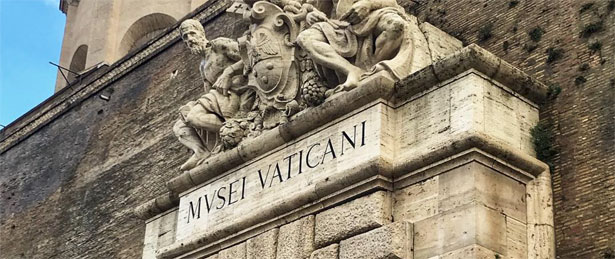
It's hard to say exactly how far in advance you should book tickets for the Vatican Museums. If you want to visit the museums on a Saturday during the high season or on long weekends or holidays, like Easter, Christmas, or on August 15, we suggest booking them at least 10 days in advance.
Tickets to the Vatican Museums what's included
The tickets for the Vatican Museums, booked on-line, include entrance to all open sections of the Vatican Museums and the Sistine Chapel. They also let you skip the line at the ticket office. Visitors that have booked can take advantage of reserved access to the Vatican Museums. This lets you save 2 or 3 hours waiting outside, especially from March to October.
Many people ask if you can visit the Sistine Chapel buying a ticket that only lets you into the marvelous chapel, the jewel in the Vatican Museums' crown. The answer is no: the Sistine Chapel is part of the Vatican Museums. To visit the Sistine Chapel you have to have an entrance ticket to the Vatican Museums.
Visit the Vatican Museums
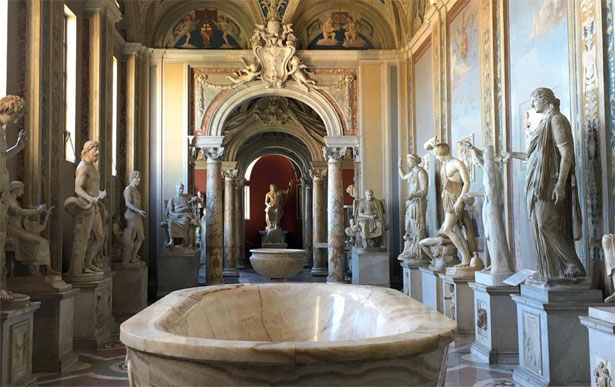
One of the features that first strikes new visitors to the Vatican Museums is that it really is a collection of museums, not just one. To see them, you have to go from one building to the next, one area to the next. The route is often unclear and unprepared visitors can easily get lost.
There are several information points at the entrance that give out free maps of the Museums. Along the route, signs show you the best or shortest way to the Sistine Chapel, or to get there with the perfect itinerary.
An excellent tip is to rent an audio guide that will orient and guide your visit. The audio guide costs €7, is available in several languages and is about 10 hours long. The itinerary can be chosen by the visitor, choosing the route they prefer. You can listen to the audio guide choosing the rooms and the works you want.
Tickets to the Vatican Museums, are the Vatican Gardens included?
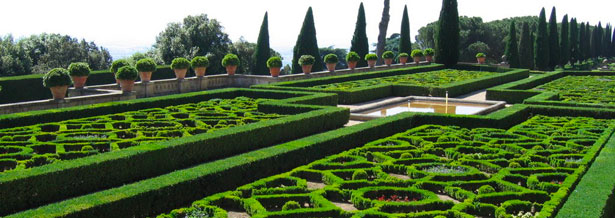
The tickets to the Vatican Museums do not include entrance to the Vatican Gardens. These lush, beautiful gardens form the backdrop of many windows in the Vatican and galleries that visitors of the Vatican Museums go through during their visit. But to enter and visit the Vatican Gardens, you have to book a special ticket that can include either a minibus tour with recorded audio guide or a full-fledged walking tour with a guide through the gardens. For more information, click on VATICAN GARDENS
Free Vatican Museums tickets
There are no free tickets for the Vatican Museums. In addition to the full adult price there are reduced price tickets. There are reduced tickets for minors between 6 and 17 years old and students between 18 and 25 years old with a student card. There are also special prices reserved for groups, school groups, pilgrims, and visitors belonging to the religious orders.
BOOK VATICAN MUSEUM TICKETS









